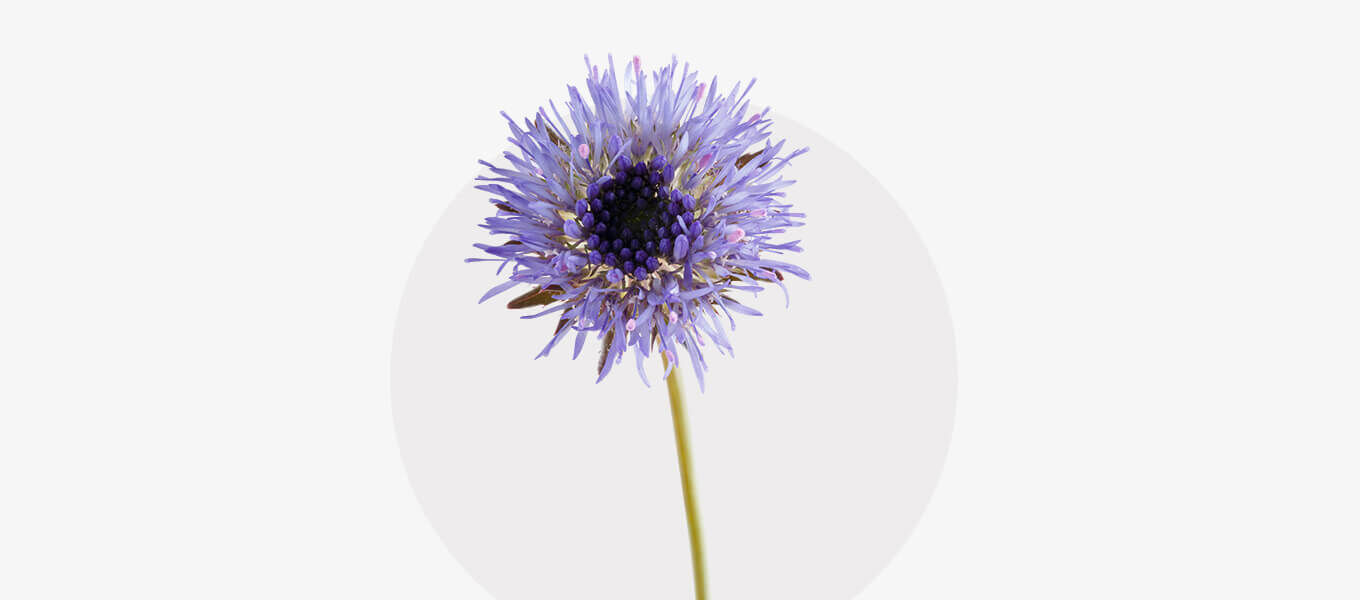Devil's bit

In 1979, Loki Schmidt, the wife of former German Chancellor Helmut Schmidt, established a foundation for the protection of endangered plants. To this day, one of the most important tasks of this organization is the selection of the Flower of the Year - an educational campaign that informs people about the ecological value of wildflowers and their habitats. In 2015, the common devil's-bit scabious was awarded the title "Flower of the Year" - find out why here!
Common devil's-bit scabious
The common devil's-bit scabious is an attractive, blue-flowering meadow flower, most of whose native populations are found in southern Germany. For example, it can be found in the Alps and the Black Forest on wet meadows as well as in moorland and heathland. As a caterpillar food and nectar plant, the common devil's-bit scabious is very important in its habitat, especially for insects. However, its occurrence is increasingly under threat due to increased nutrient inputs from fertilization and the draining of soils. Incidentally, the unusual name is due to the special shape of the underground shoot axis system (the rhizome): This dies off from below in the fall and then looks like it has been "bitten off".
A look at the botany
The common devil's-bit scabious is a perennial herbaceous plant from the honeysuckle family. It reaches a height of 20 to 100 centimeters. The upper part of its stem is branched and hairy, while the lower part is bare. Between July and September, 50 to 80 flowers form small baskets. These are usually light blue, purple or rarely pink in color. Due to its underground rhizome, which is up to 50 centimetres deep, the species often forms large stands.
Easy to care for garden plant
The common devil's-bit scabious should not be taken from the wild. Seeds and perennials of the species are available from garden centers and mail-order plant shops. In order to contribute to the protection of moorland areas, care should be taken when purchasing that the plants have been cultivated in a peat-free substrate. The common devil's-bit scabious thrives particularly well in sparse, moist and bright garden locations, where it can grow up to one meter tall. The species also proves to be competitive and persistent in low-fertilized perennial beds and planters.
Proven remedy
According to an old legend, it was once the devil who bit off the rhizome out of anger at the plant's healing powers. As early as the 15th century, manuscripts mentioned medicinal applications with the herb and roots of the devil's-bit scabious for blood purification, kidney weakness and bronchitis. Nowadays, it is used in blood purification teas, among other things, due to its tannins and bitter substances. The plant is also used in homeopathy to heal wounds in chronic skin conditions.













